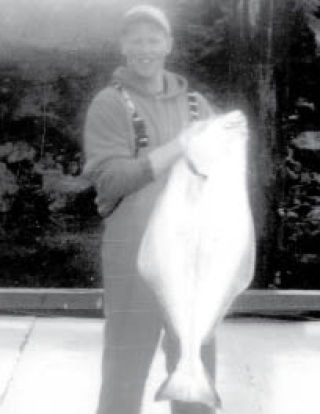A halibut town hall meeting was held Jan. 19 in Campbell River. I came away with positive feelings about the problem it was trying to address – the unfair allocation of the recreational portion of the Canadian share of halibut from the total allowable catch (TAG) as designated by the International Pacific Halibut Commission (IPHC) in its vital role of properly managing the halibut resources of the North Pacific.
Once the TAG for Canada is decided, the division of the TAG is the mandate of the Department of Fisheries and Oceans Canada. The current division is 12 per cent of the TAG to recreational fishers and 88 per cent to commercial fishers. I respectfully submit that the Canadian people who own this common property resource are being shortchanged by the allocation policies of the current Minister of Fisheries and Oceans, Gail Shea. The current policies were developed over a period of years dating back to the 1980s.
To make my points, I have referred to a book based on the proceedings of the Allocation of Fishery Resources, United Nations Food and Agricultural Organization, held in Vichy, France, April 20-23, 1980. In all, there were over 60 papers presented, and the document published 16 follow-up reviews from participating countries.
In the summary of the conference, here are some brief quotes:
“Recreational fisheries have belatedly reached a threshold level of international recognition and for internationally co-ordinated action on basic data development that the commercial fishery reached 30 years ago. The size and basic social and economic dimensions of the recreational fisheries are no longer open to serious challenge: the recreational fishery is as big, if not bigger, than the commercial fishery in three of the largest industrialized countries represented at the conference.”
Under the section of participating countries reviews, the following statements were made by A.L.W. Tuomi, Economic Development Directorate, Department of Fisheries and Oceans, Ottawa, Canada:
“The commercial fishery is Canada’s oldest industry – key events involving Canada’s recreational fishery can be traced back well over a century. Canada’s recreational fishery has been benignly neglected.”
In recognizing the value of the recreational fishery to Canada, the following survey by the federal government documented the following results:
“Anglers spent $1.1 billion in direct expenditures and on wholly attributable related investment in Canada in 1975. The marketed value of commercial fisheries for the same year was $694.3 million. Because Canada exports about 70 per cent of its commercial catch, the catch taken by anglers represents an estimated 44 per cent of the domestically produced fin-fish consumed in Canada in 1975.”
I am certain there are more recent studies that document the increased value of recreational angling to the economic well-being of Canada through tourism, service industries and manufacturing jobs related to recreational angling.
From the proceedings Recommendation #9 – Allocation Policy: “Recognizing the diversity of fishermen and their interests, it is policy to allocate a sustainable segment of the aquatic resources to each user group and, in recognition of both the dynamics and changing nature of the resource and the environment that produces it, continually review the propriety of the allocations and of the value systems on which they are based. Further, in implementing this policy, to engage vigorously in the generation, exchange and evaluation of information required for equitable allocation and perpetuation of fishery resources and their multiple values.”
In a paper “Best Use of Fishery Resources: Ecological Considerations” presented at the conference by William A. Dill, he closed with the following story by the philosopher Arthur Schopenhauer:
“One wintry day, a couple of porcupines huddled together for warmth. They found that they pricked each other with their quills: they moved apart and were again cold. After much experimentation, the porcupines found the distance at which they gave each other some warmth without too much sting.”
I respectfully suggest we must try to find the distance at which we can co-exist without too much sting. Halibut are a common property fishery resource that is owned by the people of Canada, and surely the people of Canada are entitled to more than 12 pounds of every 100 pounds of the TAG.
In light of Recommendation #9, which Canada signed off on, I suggest that Canada review its halibut allocation policies in light of changing times and best use of our resource.
Participate – write a letter.
